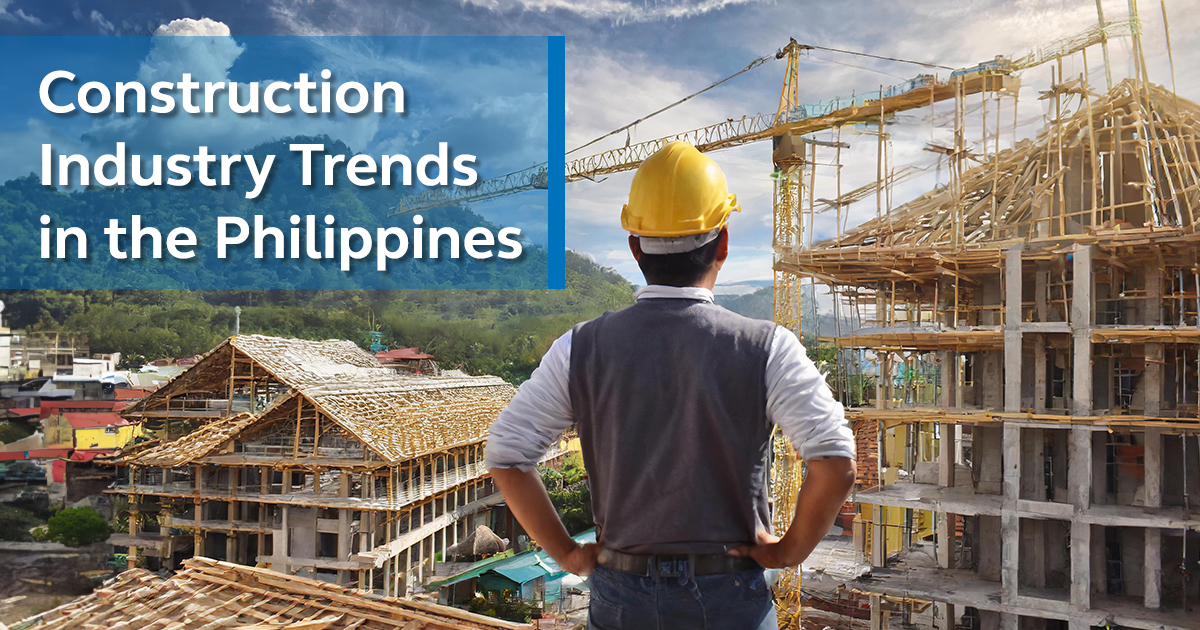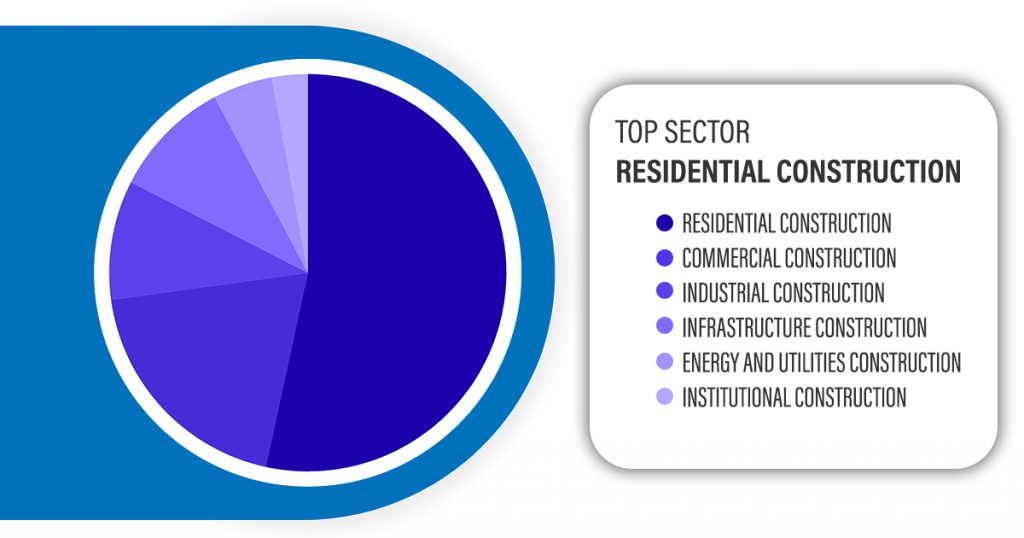
The construction industry in the Philippines is expected to grow over the next decade, and this growth will be robust. According to Global Data Report in December 2023, the construction market is already at $59.4 billion in 2022 and is projected to achieve more by more than 6% of its AAGR from 2024 to 2027.
As we delve into the construction industry trends in the Philippines that we should expect for the next years, let’s first discuss what sectors have established the progress of the Philippine construction market.
Key Sectors of the Construction Industry

Residential Construction
This sector is the leading contributor to the growth of the Philippine construction market in 2022 and is expected to expand, supported by an increase in real estate loans and investments in new residential buildings, which cover single-family and multi-family housing projects.
Commercial Construction
The commercial sector is set to grow, fueled by a boost in tourism and investments in retail and office spaces. It encompasses projects like hospitality and leisure buildings, offices, outdoor leisure facilities, and retail spaces.
Industrial Construction
The increased in manufacturing firms constructed in the Philippines over the past years and the rising demand for automobiles, covering projects such as chemical plants, manufacturing facilities, and waste processing plants make the industrial sector a highlight to construction industry.
Infrastructure Construction
The Marcos administration has made significant progress in infrastructure through the Build Better More Program. Investments from both public and private sectors in roads, rails, and airports are expected to propel growth in this sector, which includes rail and road infrastructures and other projects such as the recently updated Metro Manila Subway Project.
Energy and Utilities Construction
Aside from infrastructure improvements, the government is also committed to the National Renewable Energy Program (2020-2040), aiming to increase renewable energy’s share in the power mix, which highlights the construction of energy and utility facilities as well.
Institutional Construction
There is an increased number of newly constructed school buildings, especially in province areas, which drives the growth of institutional construction. Healthcare infrastructure has made a significant appearance on the recent news of giving 6.6% higher budget from last year’s for Health Facilities Enhancement Program, aiming for Universal Health Care sites and Geographically Isolated and Disadvantaged Areas first.
Key Trends in The Philippines for Construction
It is essential to understand how these sectors align to make a difference in the Philippines’ construction industry. As you go further, explore key trends expected to maintain momentum and keep the industry alive.
Greener Practice for Sustainable Buildings
Sustainability is no longer an option but a necessity in the construction industry. It was reported that 39% of global carbon emissions are coming from constructed facilities, accounting for 28% from its operations and 11% from the construction supplies used. The Philippines is witnessing a surge in the adoption of green building practices, emphasizing sustainable materials and energy-efficient designs.
Most developers now use green building certifications in the Philippines to ensure their construction projects meet the standards. Common certifications are LEED (Leadership in Energy and Environmental Design), WELL, EDGE (Excellence in Design for Greater Efficiencies), and BERDE (Building for Ecologically Responsive Design Excellence) offered by numerous consultancy firms in the country.
Enhancing Project Delivery through 3PL Apps
Collaboration is at the heart of successful construction projects. Partnering with a third-party logistics provider allows construction teams across different locations to work together seamlessly, ensuring that projects are delivered on time and within budget.
3PL and delivery apps like:
- Transportify support construction materials delivery through bigger trucks, and their mobile app that will support real-time communication, document sharing, and delivery tracking.
- KargaX is also an expert when it comes to deliveries across islands in the Philippines with their trucks and adapt to your logistics needs.
- E-Carga is known for its boom trucks, cranes, and high and low-bed trailers that you can utilize for bigger construction projects.
Modular and Prefabricated Construction
Modular and prefabricated construction methods are gaining traction in the Philippines, offering a viable solution to time, cost, and labor shortages. These methods involve off-site manufacturing of building components, providing faster assembly and higher quality control on-site. This trend is particularly beneficial for residential, commercial, and educational projects, where speed and efficiency are the focus.
Safety and Health Innovations
The construction sector should also put safety and health in considerations as the trends in the Philippines is now focus to the welfare of human concerns. Advanced equipment and wearables are being deployed to monitor workers’ health and prevent accidents, marking a shift towards a more proactive approach to safety management.
Big Data and Analytics
Big data and analytics are now simplifying how construction projects are planned, executed, and managed. By advanced handling and managing of data, companies can predict trends, optimize resource allocation, and enhance decision-making processes. This trend towards data-driven construction management is improving project outcomes, reducing costs, and increasing efficiency.
Building Resilience Against Climate Change
With the Philippines being prone to natural disasters, building resilience into construction projects is a top priority. The industry is innovating in materials and design to create structures that can withstand extreme weather conditions.
Heading into what’s coming to construction industry, the Philippines has made its way to stands at the cusp of a significant evolution and the real challenge here is to stay in the game. The trends should not be ignored as through them, stakeholders can not only enhance operational efficiency but also contribute to the sustainable and technological advancement of the sector. The future of construction and its trends in the Philippines looks promising, with innovations that promise to bring about more resilient, efficient, and sustainable infrastructure.
SEE ALSO:
